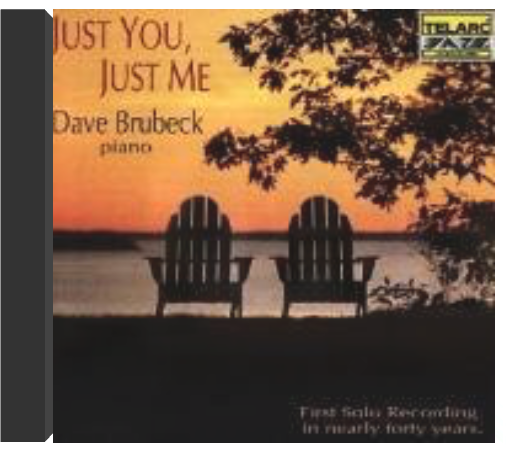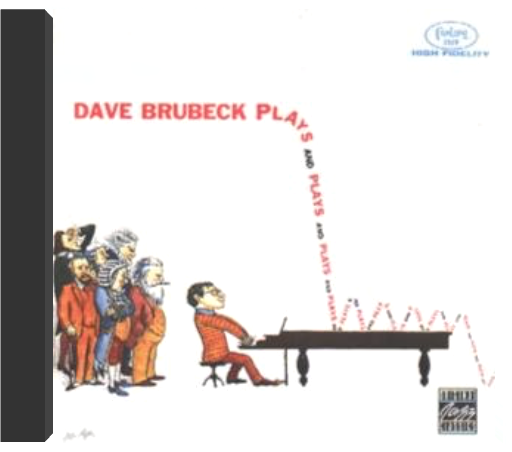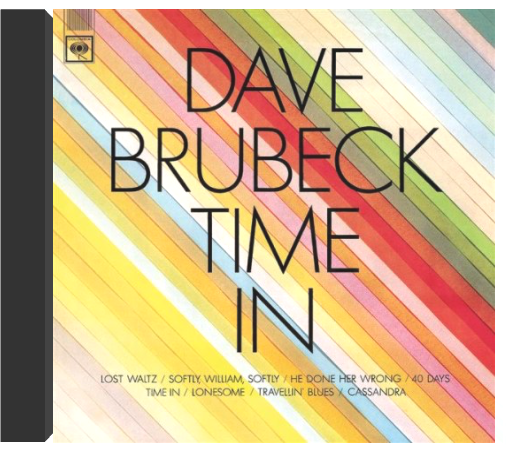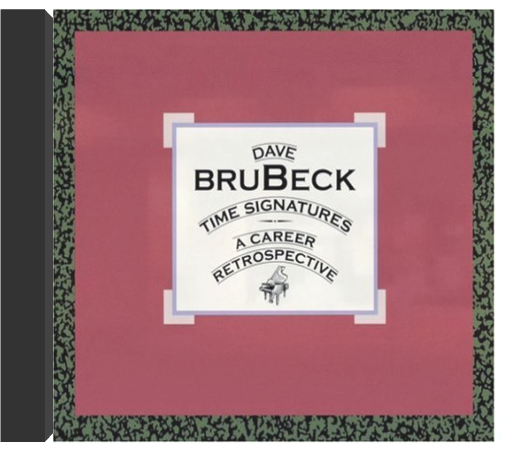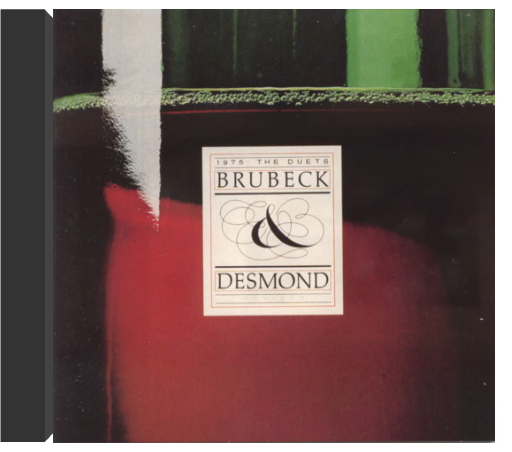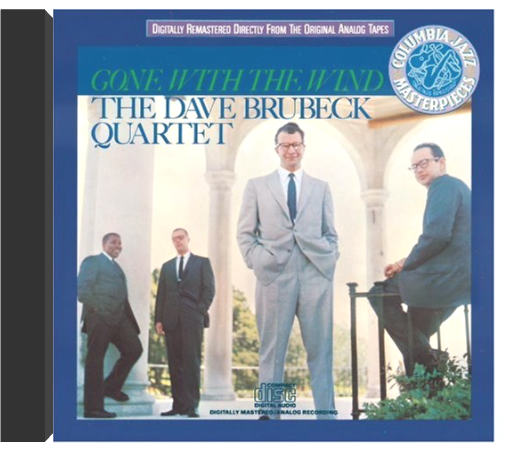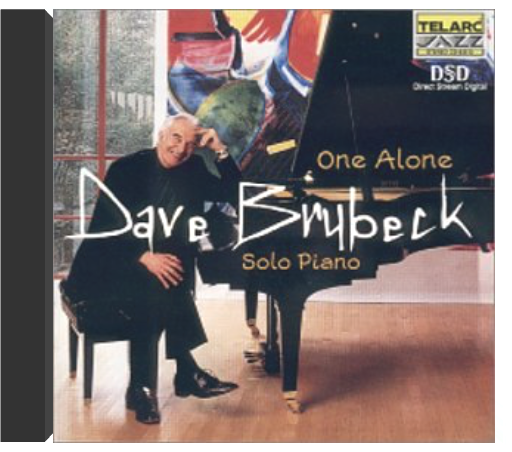 One AloneDave Brubeck One AloneDave Brubeck Composer and pianist Dave Brubeck has (along with saxophonist Paul Desmond) given us some memorable jazz hits like "Take Five" and "Blue Rondo a La Turk." Even though he mostly worked in combos, he recorded four solo piano recordings in his six-decade career: Brubeck Plays Brubeck; Brubeck Plays and Plays and Plays; Just You, Just Me, and A Dave Brubeck Christmas. One Alone is an excellent addition to those aural gems, marked by Brubeck's flowing and logical right-hand lines and steady left-hand walking basslines. He polishes off 13 compositions, most of them show tunes from the 1930s and '40s, ranging from George Gershwin's "Someone to Watch Over Me" to Harold Arlen's "Over the Rainbow," and the introspective title track by Sigmund Romberg. Brubeck pays homage to the Duke Ellington canon with his stridish swing on "Just Squeeze Me" and "Things Ain't What They Used to Be." The pianist also revisits his own tunes, the moody "Summer Song" and the heartbreaking "Weep No More"—written in 1945—with the romance and melodic resonance that could only come from a master of American music, which Dave Brubeck most certainly is. —Eugene Holley Jr. 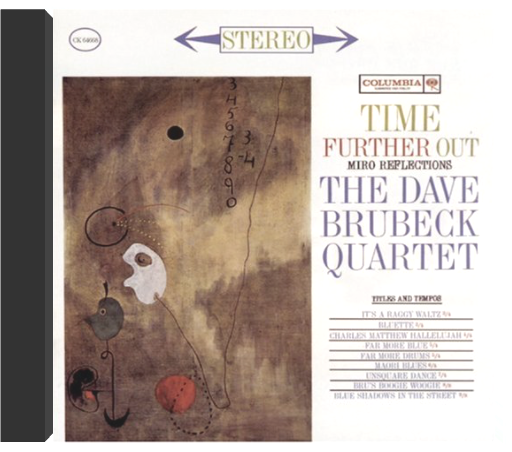 Time Further OutDave Brubeck Time Further OutDave Brubeck Time Further Out extends upon the concepts first enunciated on the Brubeck Quartet's surprise hit Time Out, but in this case with the organizing principles involving the leader's varied compositional treatments of the blues—traditional and otherwise. Thus a darkly ruminative tune such as "Bluette" treats a fairly standard 12-bar form in a very non-standard manner, interpolating a variety of classical devices that suggest the melodic influence of Chopin and the contrapuntal devices of Bach in its treatment, with a yearning alto solo from saxophonist Paul Desmond that suggests the emotional content of a blues, without specifically referring to standard devices. As if to italicize his band's mastery of polymeter, pianist Brubeck treats the fifth, sixth, seventh, eighth, and ninth tunes in corresponding meters, to particular effect on the 7/4 hoedown of "Unsquare Dance," the 8/8 barrelhouse changes of "Bru's Boogie Woogie" and the engaging dissonances of his 9/8 mood piece "Blue Shadows in the Street." And on "Far More Drums," drummer Joe Morello displays a mastery of 5/4 metric variations and African-styled polyrhythms that was unheard of for that time, save for percussive grandmasters such as Max Roach. —Chip Stern 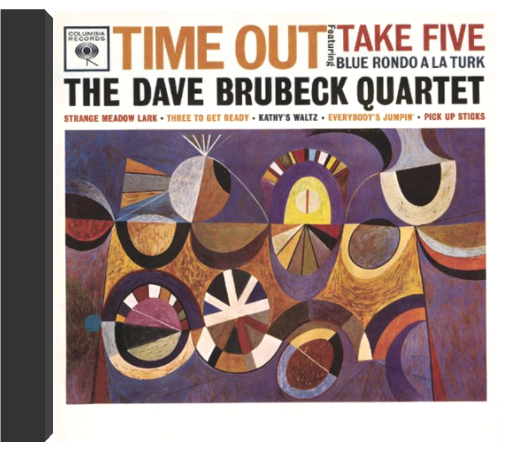 Time OutDave Brubeck Time OutDave Brubeck Containing the monster hit Take Five, Time Out firmly establishes the Dave Brubeck Quartet outside of the jazz world. This seminal recording is highlighted by the moody arrangements and saxophone work of Paul Desmond. 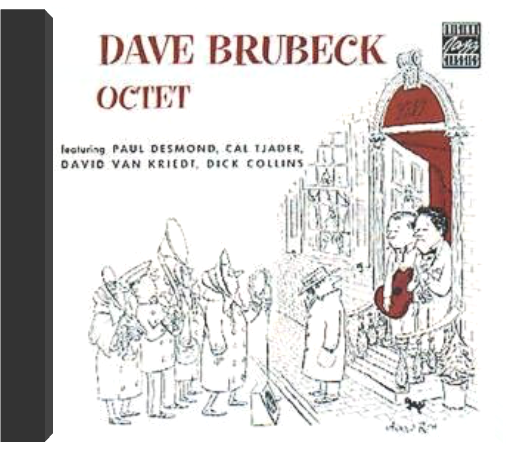 The Dave Brubeck OctetDave Brubeck Octet The Dave Brubeck OctetDave Brubeck Octet The listener has to forgive a few things about this undeniably brilliant collection of Dave Brubeck's first big ensemble. First: the liner notes' pretentions. Brubeck announces there that between 1946, when some of these tunes were recorded, and 1956, when the tapes were first "reissued" on LP, "very few released recordings" have "more musical importance" than the octet. Second: the nearly seven minutes of "How High the Moon" narrated to show how jazz was formed, as the band plays in short demonstrative segments. Third: the audio vérité sound, which even Brubeck thought questionable in 1956. Hearing this dynamic set, though, makes forgiveness easy. The arrangements show a wild abundance of color and orchestral finesse (many of the group's members were, like Brubeck, students of Darius Milhaud). You get quick-clip swingers like "The Way You Looked Tonight" and the string of chamber-esque horn studies that includes "Schizophrenic Scherzo" and more. You also get to hear early Paul Desmond and William O. Smith bouncing ideas off each other and drummer Cal Tjader. And it's all a delight, especially with the magnanimity of "forgiving" Brubeck. —Andrew Bartlett 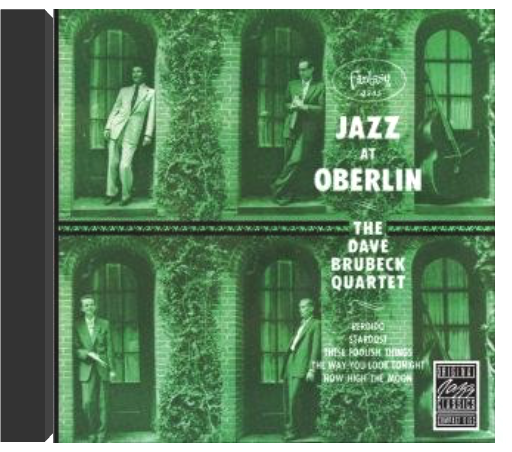 Jazz at OberlinDave Brubeck Quartet Jazz at OberlinDave Brubeck Quartet No Description Available |
 Made with Delicious Library
Made with Delicious Library
